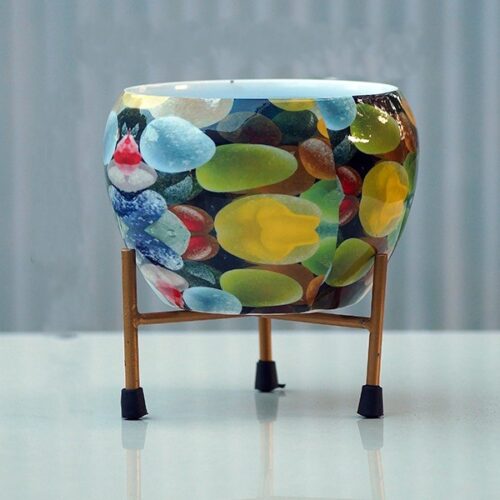Ludwigia palustris ‘Orange’ is a lovely stem plant that was originally known as Ludwigia sp. ‘Atlantis.’ It is most likely Ludwigia palustris x repens. It has a striking colour pattern with light yellow venation when emersed. Depending on the amount of light, the submerged leaves turn a beautiful yellow orange to dark orange colour. This colourful novelty, like other stem plants, should be planted with a larger number of stems to achieve a good effect. This Ludwigia is not demanding, but good growth requires strong lighting and a sufficient supply of CO2. The rate of growth is moderate.
Palustris is a Latin word that means “of the marsh,” indicating the species’ typical habitat. It is more suited to palustrine or swampy environments, as the name Ludwigia palustris suggests.
Common names include:
Hampshire-purslane Marsh Purslane
Seedbox Marsh
The common water primrose
Purslane in water
bogus loostrife
The sprawling stems and leaves thrive in the ground irregularly when you find the plant under water. When the water is shallow, the water purslane creeps up to the surface, its leaves and upper stems poking above the surface.
Submerged, this perennial plant can grow to be 3-12 inches long. This herb’s smooth and succulent stems range in colour from light green to deep red. This aquatic plant can also grow emersed and is not sensitive due to its fleshy tissues’ ability to conserve moisture.
This aquatic herb has alternating pairs of leaves along its semi-tilted stem. Depending on the condition of the tank, the leaves appear golden, then orange, and finally deep red. The prostrate stems of this hardy plant frequently root out at the nodes. Flowering usually occurs from the middle of summer to the end of autumn. Its flowers grow directly from the stem rather than from stalks, one on each leaf axil.
Each flower is distinguished by a short green tube-like calyx. The calyx has four stamens, four ovate teeth, and a short style above its developing ovary. There are no petals to identify; otherwise, its presence is too small and unrecognisable. Furthermore, some barely visible flowers are thought to be self-fertile.
In the calyx, a seed capsule grows. It is approximately 14 inches long, flat-topped, and has four angles. Each seed capsule has four chambers filled with tiny seeds.
You might not notice the presence of tiny water purslane flowers until mid-summer. Similarly, some baby plants are gradually emerging, blooming, and forming small seedpods as a result of self-pollination or cross-pollination caused by fleeing insects.
The root system is fibrous, strong, and shallow. It produces rootlets near the axis of the lower part of the leaves.
Ludwigia palustris is indigenous to the Pacific Northwest (Eurasian) and North America. Its extensive range includes the United States, specifically Illinois, Massachusetts, Rhode Island, Vermont, Connecticut, Maine, and New Hampshire.
This stem plant is common in Africa, South America, and even Greenland because it thrives aggressively in its natural habitat. This particular plant is all-season-friendly, which is why it has spread nearly all over the world (except Australasia).
The right lighting for water purslane, like any other plant that requires sunlight, will result in much better coloration and healthy growth. It is not temperature sensitive, but like most Ludwigia species, it prefers to be kept warm and at a pH of 6.0-7.0.
This aquatic plant responds well to macronutrient fertilisers, particularly phosphate and nitrate. The addition of CO2 and other micronutrients can improve its growth and coloration. In any case, the plant is self-sustaining and can adapt to climates ranging from warm to cold.











